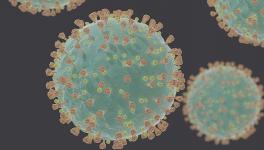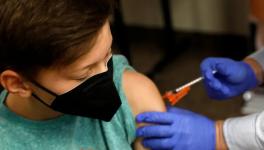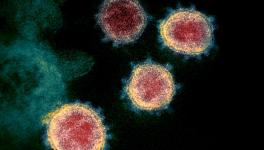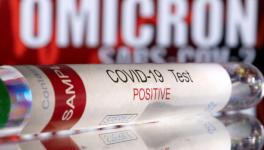Researchers Examine Molecular Factors That Provide Variants Edge Over Others
One of the worrying aspects of the pandemic is the emergence of newer variants with new characters that sometimes become more threatening. New variants have shown a trend of outnumbering the previous ones. For example, when the Delta variant emerged, it outnumbered the original one within a short period and became the dominant form worldwide. The Delta led to more disease severity coupled with its rapid spreading. At this moment, Omicron has become the dominant variant worldwide. However, the Omicron is characterised by less hospitalisation of the patients infected by it.
Scientists have been trying to decipher the molecular bases of the variants that give them an edge over others. This is essential to know the disease progression in more detail and from the disease management perspective. A team of researchers of the University of British Columbia, Vancouver, Canada, has shed some light on the molecular aspects of some variants.
The group has published two studies till now on the structural and biochemical aspects of three variants—Delta, Kappa and the Omicron. The recent published in Nature Communication on February 8 has reported Kappa and Delta variants, which co emerged in India in late 2020. Their work explains how Delta edged over the Kappa and eventually outnumbered it. Sriram Subramaniam, the group leader, commenting on the findings, said, “We are at a point in the pandemic where new variants continue to emerge and compete with each other. It's very much survival of the fittest. Understanding the factors that underpin the 'fitness' of each variant will allow us to respond more effectively to emerging threats and better target treatments.”
The researchers used the technique of cryo-electron microscopy to study what lies at the atomic level that provides the structural benefit to the variants. They considered the spike protein in their study, and along with cryo-electron microscopy, the team also assessed the biochemical aspects. Their main interest was to decipher the strength of spike protein binding to the ACE2 receptor present in human cells.
It is worth recalling at this point that the novel coronavirus clings to human cells with the help of the spike protein, which is on the surface of the virus. The spike protein attaches itself to another protein present in human cells, namely the ACE (angiotensin-converting enzyme). There is a complex mechanism through which this attachment happens, and the virus then enters into human cells (actually, it transfers its genetic material, the RNA, into human cells and then develops into a viral particle inside it).
“The spike protein extends from the surface of the virus and binds with the ACE2 receptor in order to infect human cells, like a key being inserted into a lock," explained,” explained Subramaniam.
The researchers found that both Kappa and Delta variants could display evasion from the attacks of the antibodies that target a specific region of the spike protein called the N terminal domain. The team also found that Delta had a better ability to create stronger bonds with the ACE2 receptor of human cells compared to Delta and the original variants. "The combination of increased antibody escape and enhanced ACE2 binding explains, in part, for the rapid global dominance of the Delta variant," Sriram Subramaniam said further.
The team also found an interesting aspect of the variants. The Kappa variant's spike protein has an unusual property, wherein two kappa spike proteins fuse, which has not been seen in any other variant. The fusion of the two proteins is known as ‘stacked head to head dimer’.
The team also conducted similar cryo-electron microscopic experiments with the Omicron variant, which has been published in Science, where they found that Omicron has an identical binding affinity with ACE2 as that of Delta. Still, they have a more remarkable ability to evade neutralising antibodies (the antibodies in vaccines that hinder the binding of the virus with human cells and thus prevent an infection in the first place).
Get the latest reports & analysis with people's perspective on Protests, movements & deep analytical videos, discussions of the current affairs in your Telegram app. Subscribe to NewsClick's Telegram channel & get Real-Time updates on stories, as they get published on our website.
























